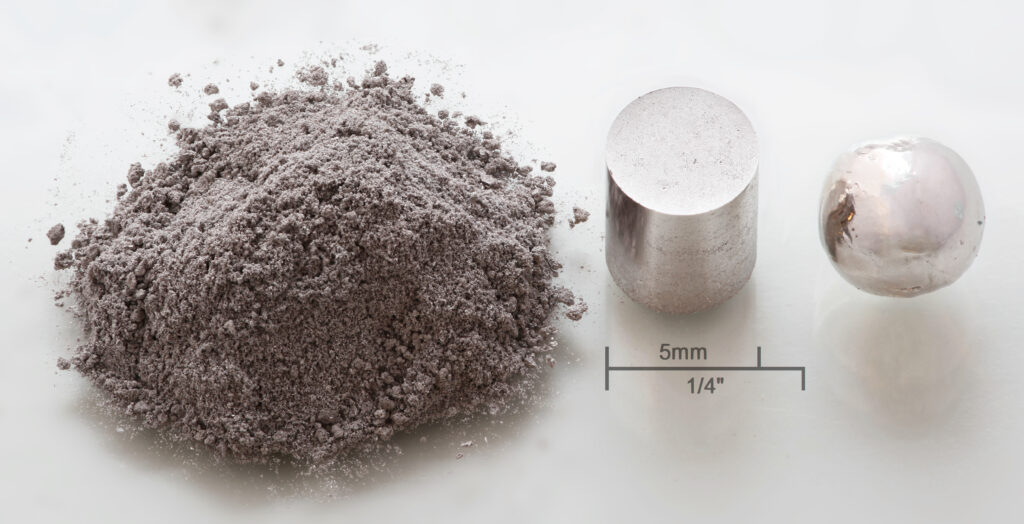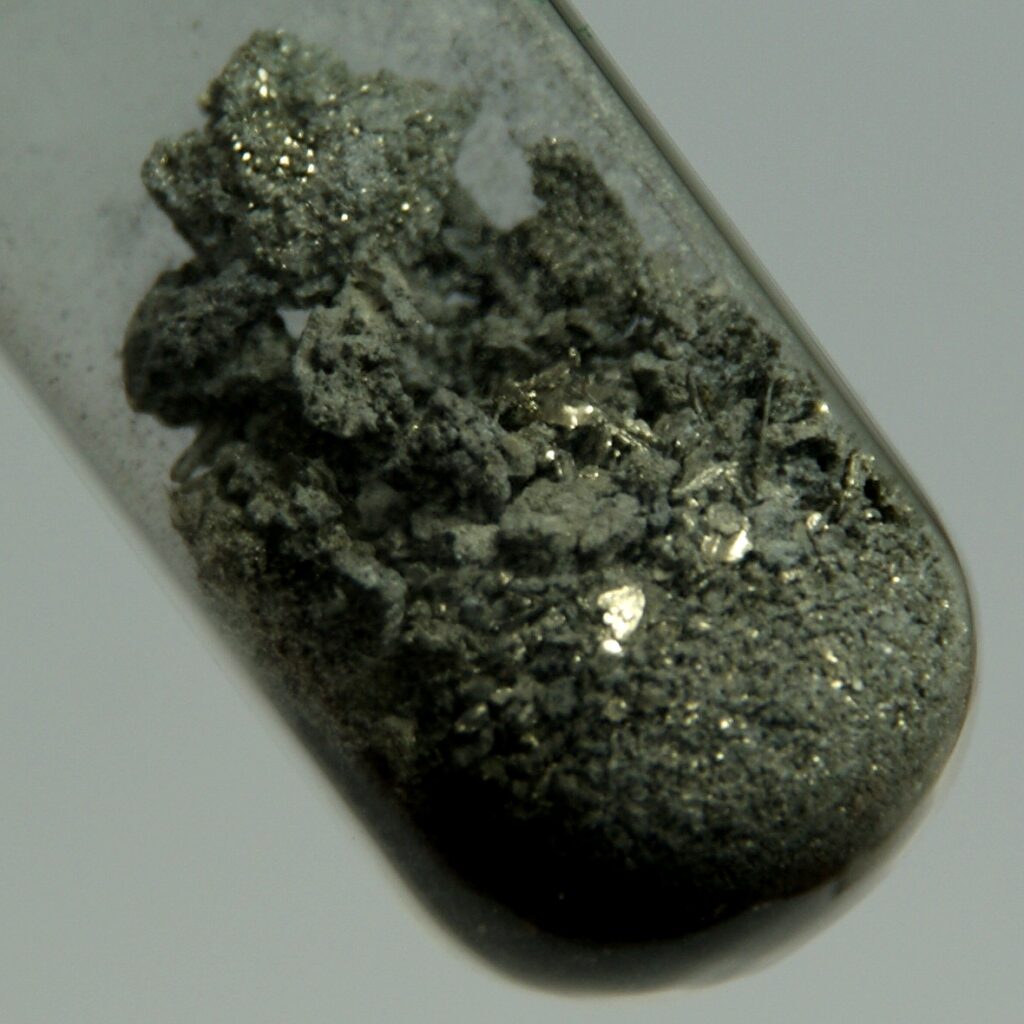Overview
Al 3003 powder is a popular aluminum alloy powder known for its good formability, corrosion resistance, and moderate strength. It contains manganese as its major alloying element and is widely used for applications requiring moderate strength, formability, weldability, corrosion resistance, and high electrical and thermal conductivity.
Some key details about Al 3003 powder:
- Composition – Aluminum with 1.2% manganese and 0.12% copper
- Common applications – Metal 3D printing powders, sintered parts, brazing alloys
- Key properties – Medium strength, excellent corrosion resistance, good formability and weldability, excellent thermal and electrical conductivity
- Supply forms – Powder, wire, foil, sheet, plate
- Standards – ASTM B209, AMS-QQ-A-250/8
This guide provides a detailed overview of Al 3003 powder covering its properties, processing, applications, suppliers, costs, design considerations, and comparisons with other aluminum alloys.
Properties of Al 3003 Powder
Al 3003 powder offers a unique combination of properties that make it suitable for various applications:
Mechanical Properties
| Property | Details |
|---|---|
| Tensile Strength | Around 200 MPa |
| Yield Strength | Around 130 MPa |
| Elongation | Around 25% |
| Hardness | Around 65 HB |
- Moderate strength suitable for applications like metal 3D printing, powder metallurgy parts, automotive parts etc.
- Excellent ductility and formability due to nearly pure aluminum composition.
- Not ideal for high strength structural applications. Better alloys available.
Physical Properties
| Property | Details |
|---|---|
| Density | 2.73 g/cm3 |
| Melting Point | Around 615°C |
| Electrical Conductivity | Around 35 MS/m |
| Thermal Conductivity | Around 150 W/m-K |
- Low density compared to other engineering materials makes it suitable for weight critical applications.
- High electrical and thermal conductivity useful for heat management applications.
- Low melting point allows processing by techniques like metal 3D printing.
Corrosion Resistance
- Excellent corrosion resistance in various environments due to manganese alloying addition.
- Resistant to corrosion by water, moisture, and many chemicals.
- Used in applications requiring good outdoor corrosion resistance.

Processing of Al 3003 Powder
Al 3003 powder can be processed using various techniques:
Additive Manufacturing
- Popular choice for binder jetting and selective laser sintering 3D printing due to good powder flow and low porosity.
- Provides good surface finish and dimensional accuracy in 3D printed parts.
- Susceptible to oxidation during printing resulting in lower mechanical properties.
Powder Metallurgy
- Used for pressed and sintered P/M parts requiring medium strength and ductility.
- Provides isotropic properties due to random powder distribution.
- Achieves close tolerances and net shape or near-net shape fabrication.
Thermal Spraying
- Al 3003 powder can be thermally sprayed to deposit thick corrosion resistant aluminum coatings on metal substrates.
- Provides excellent corrosion and wear resistance.
- Spray parameters must be controlled to minimize oxidation.
Welding
- Al 3003 alloy has excellent weldability and can be fusion welded using gas tungsten arc welding.
- Susceptible to solidification cracking in welds, which can be avoided by filler material selection.
Brazing
- Used as brazing filler material because it liquates and flows at brazing temperatures providing strong joints.
- Care must be taken to avoid hot cracking during brazing of Al 3003.
Applications of Al 3003 Powder
Some major applications of Al 3003 powder include:
Metal 3D Printing
- Popular aluminum alloy powder for binder jetting and selective laser melting 3D printing.
- Provides good strength and surface finish in 3D printed parts with controlled processing.
Powder Metallurgy
- Used to manufacture sintered P/M parts like sprockets, gears, bearings requiring medium strength.
- Provides isotropic properties and net shape fabrication.
Automotive Parts
- Used to manufacture automotive parts like pistons, valves, linkage components requiring good strength, corrosion resistance and machinability.
Brazing and Soldering
- Al 3003 powder and wire used as filler material for torch brazing of aluminum and galvanized steel.
- Provides corrosion resistant brazed joints.
Corrosion Resistant Applications
- Used in chemical handling, heat exchangers, valves, marine hardware etc. needing corrosion resistance.
- Provides good outdoor corrosion resistance in architectural applications.
Thermal Management
- Used in heat sinks, heat exchangers, and electronic packages due to high thermal conductivity.
- Al 3003 anodized coatings provide thermal control surfaces for spacecraft.
Electrical Applications
- Used in electrical conductors and bus bars requiring high electrical conductivity and corrosion resistance.
Al 3003 Powder Specifications
Al 3003 powder is available in different size ranges as per international specifications:
| Powder Size | Main Applications |
|---|---|
| >150 micron | Thermal spraying |
| 45-150 micron | Metal 3D printing, thermal spraying |
| 15-45 micron | Press and sinter P/M parts |
| 5-15 micron | P/M parts with fine details |
| <5 micron | Brazing pastes, conductive inks |
- Smaller powder sizes provide better sintering, surface finish and resolution in 3D printed/P/M parts.
- Larger powder sizes provide better powder flow and reduced oxidation during printing/sintering.
Chemical Composition
| Element | Weight % |
|---|---|
| Aluminum | Base |
| Manganese | 0.8-1.5 |
| Copper | 0.1 max |
| Other | 0.05 each |
| Other | 0.15 total |
Particle Characteristics
| Parameter | Specification |
|---|---|
| Apparent density | Around 1.2-1.6 g/cm3 |
| Tap density | Around 2.6-3.0 g/cm3 |
| Flow rate | Around 12-18 s/50g |
| Morphology | Spherical, satellite free |
| Oxide content | < 3% |
- Spherical morphology provides good powder flow during processing.
- Higher apparent and tap densities improve powder packing and sintered density.
- Flow rate determines spreading of the powder during printing.
- Lower oxide content reduces porosity in finished parts.
Selecting Al 3003 Powder Suppliers
Al 3003 powder should be sourced from reputable suppliers who can ensure:
- Consistent chemical composition within specification limits
- Good powder morphology with minimal satellites
- Controlled particle size distribution based on application
- Reliable supply chain and quality checks
- Competitive pricing for bulk quantities without compromising quality
- Technical expertise in aluminum alloy powders
- Customization of powder characteristics if required
Some leading global suppliers of Al 3003 powder include:
| Supplier | Location |
|---|---|
| Alpoco | UK |
| Aluminium Powder Company | USA |
| Valimet | USA |
| TLS Technik | Germany |
| Metal Powders | India |
Pricing depends on order quantity and powder characteristics. Indicative pricing for 45-150 micron powder is $5-8 per kg.

How to Design with Al 3003 Powder
Key design considerations when using Al 3003 powder:
- Account for ~15-20% reduction in strength compared to Al 3003 wrought alloys
- Design wall thicknesses ≥ 1 mm to minimize residual porosity issues
- Optimize part orientation to reduce need for supports during 3D printing
- Include machining allowances of ~0.5 mm for achieving dimensional accuracy
- Heat treatment can be used to increase strength by precipitation hardening
- Apply protective coatings if used in highly corrosive environments
- Ensure joint designs allow for braze filler flow and capillary action
Comparison of Al 3003 with Other Al Alloys
Vs. AlSi10Mg powder
- Al 3003 has better corrosion resistance and formability.
- AlSi10Mg provides higher strength and hardness.
Vs. Al 6061 alloy
- Al 6061 has higher strength and hardness compared to Al 3003.
- Al 3003 offers better corrosion resistance and formability.
Vs. Al 7075 alloy
- Al 7075 provides very high strength but poorer corrosion resistance.
- Al 3003 has moderate strength but excellent corrosion resistance.
Installation and Maintenance of Al 3003 Parts
Key considerations for installation and maintenance of Al 3003 powder-based parts:
- Clean surfaces thoroughly prior to installation to ensure proper fit
- Use suitable jointing compounds and gaskets to prevent galvanic corrosion
- Apply protective coatings on surfaces exposed to weather or chemicals during service
- Ensure good ventilation and heat dissipation around Al 3003 heat exchangers
- Follow prescribed brazing procedures including fluxing and temperature control
- Conduct periodic visual inspections for damage or wear
- Check electrical and thermal contacts for conductivity degradation
- Avoid contact with mercury which can amalgamate with aluminum
Advantages and Limitations of Al 3003 Powder
| Advantages | Limitations |
|---|---|
| Excellent corrosion resistance | Moderate strength |
| Good ductility and formability | Prone to fire hazard |
| High thermal and electrical conductivity | Sensitive to oxidation |
| Lightweight | Limited high temperature strength |
| Good machinability and weldability | |
| Low cost |

FAQ
Q: What is Al 3003 powder used for?
A: Al 3003 powder is used for metal 3D printing, pressed & sintered P/M parts, brazing alloys, automotive parts, and other applications needing moderate strength, good corrosion resistance and formability.
Q: Is Al 3003 powder weldable?
A: Yes, Al 3003 has excellent weldability characteristics. Fusion welding methods like GTAW can be used to weld Al 3003 powder-based parts.
Q: What is the melting point of Al 3003 powder?
A: The melting point of Al 3003 powder is around 615°C, which is lower than other common aluminum alloys. This allows it to be easily processed by 3D printing and sintering.
Q: What is the typical size range of Al 3003 powders?
A: Al 3003 powders suitable for AM and PM applications range from around 10 microns to 150 microns. Finer powders provide better resolution while coarser powders improve flowability.
Q: Is Al 3003 powder expensive?
A: Al 3003 powder has relatively low pricing of $5-8 per kg in bulk quantities. This makes it an economical choice for many applications needing moderate strength and corrosion resistance.
Q: Does Al 3003 powder require heat treatment?
A: Optional heat treatment can be used to increase the strength of Al 3003 powder products by precipitation hardening. But most applications utilize the medium strength of Al 3003 in annealed state.
Q: What standards does Al 3003 powder conform to?
A: Al 3003 powder meeting ASTM B209 and AMS-QQ-A-250/8 standards is recommended. Reputable suppliers will conform to these compositions and powder specifications.
Q: Can Al 3003 powder be recycled?
A: Yes, Al 3003 powder can easily be reclaimed and recycled after use through processes like granulation. This provides significant cost benefits over other alloy powders.





